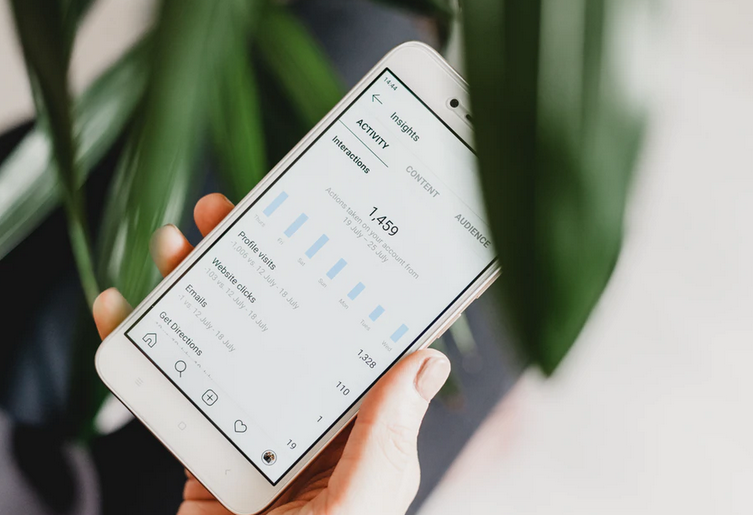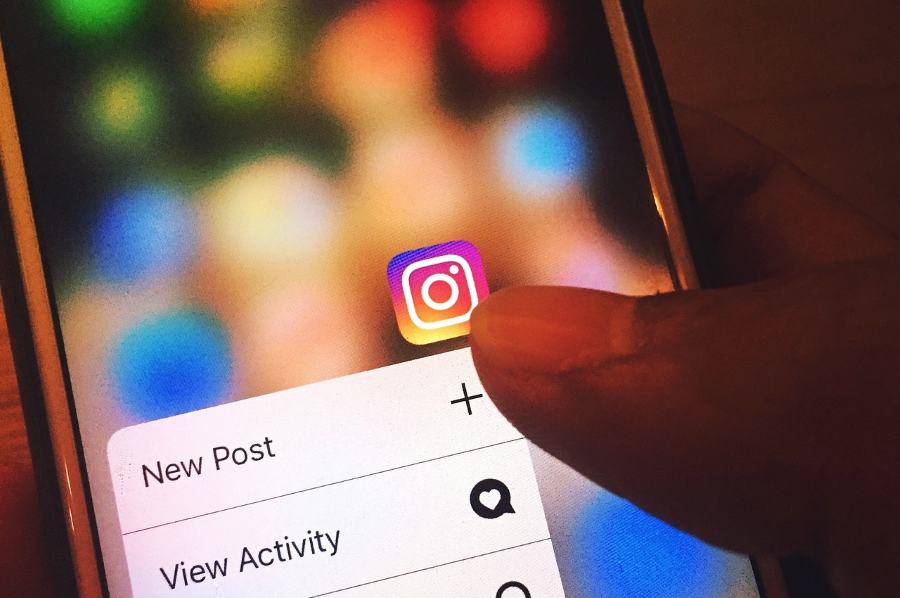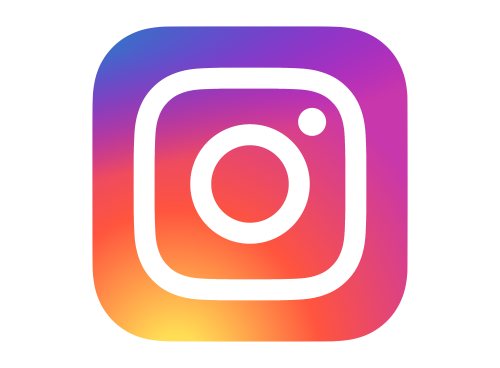Instagram's Dislike Button: What It Means For Businesses & Marketers
by Kerry Baker on 26-May-2025 12:30:00

We are big fans of Instagram here at JDR. The platform is a great way for businesses to publish and promote visual content and to show a more playful and informal side to their products and services, and engage customers in new and unique ways. It’s ‘digital marketing with a human face’ down to the ground. However, a new feature currently being tested by Instagram has divided opinion among users. This is the proposed dislike button that, should it be rolled out, would allow users to downvote an annoying, irrelevant, or distasteful comment.
In this article, we will look at what the dislike button is, how it works, and what it could mean for businesses and marketers.
What Is The Instagram Dislike Button?
In February 2025, some Instagram users started to notice a ‘thumbs down’ button integrated into the comments section of Reels and feed posts, allowing users to express their dislike of certain comments. This was confirmed by Instagram’s CEO, Adam Mosseri, on a Threads post that explained that the dislike button was a public test currently being released to a small fraction of Instagram users. The purpose of the dislike button is, purportedly, to help ‘make comments more friendly on Instagram’, and to tackle allegations of spam, AI bots, and cyberbullying. Currently, a timeline for public release has not been confirmed, nor whether a full rollout will even go ahead.
Background: Reddit, Facebook, and YouTube
The best live comparison for how the Instagram dislike button could work in practice is the way that downvoting works on the social networking and community site Reddit. On Reddit, the downvote button has been a long-term, core feature of the platform’s voting system, and is intended to help users collectively curate content quality by expressing disapproval, or indicating that a comment or post is not contributing positively to the discussion.
The important difference to the proposed Instagram dislike vote is that downvoting on Reddit applies to both posts and comments. We need to be clear that Instagram dislikes currently apply only to comments, not content. Nevertheless, there may be some comparisons about how the two systems work in practice. In Reddit, posts and comments with more ‘upvotes’ rise to the top of the feed, while those with more ‘downvotes’ sink in prominence, making the platform’s content more community-driven.
On Instagram, therefore, when a comment receives more dislikes than likes, its score or ‘weight’ could decrease, and it could therefore become less visible in feeds. Another interesting comparison is the way that Reddit algorithms use the voting system to prioritise content in feeds that align with posts and comments that gain the most likes. In other words, downvoted content is less likely to be visible on feeds and in response to searches.
Downvoting Controversy
Downvoting is controversial on Reddit for exactly the same reasons as the proposed dislike button is controversial on Instagram. This is because some Reddit users downvote comments or content simply because they disagree with the opinion, even if it is relevant and well-articulated. Groups of users may also coordinate to downvote specific comments, which could skew the algorithms unfairly against legitimate content. Unique or controversial perspectives in comments may also be buried due to extensive downvoting, stifling diversity and discussions.
Some Instagram users are unhappy about the proposed dislike button because of the effect it could have on discouraging participation and engagement. The feature could also lead to an ‘echo chamber mentality’ in which only the most popular and mainstream opinions thrive, potentially reducing the usefulness of the platform for smaller or outlying businesses to make themselves heard.
Dislikes And Downvoting On Facebook
Instagram is not the only Meta-owned platform to experiment with a ‘dislike button’. Facebook did so in 2018, briefly testing a down-vote button in various regions. Facebook was at pains to deny that the feature was a direct ‘dislike’ button. Instead, the downvote button allowed users to flag inappropriate, misleading, or offensive comments in order to combat alleged fake news, as well as misleading or off-topic posts in Facebook feeds. Unlike the Reddit voting system, Facebook downvoting did not publicly display a score or affect the visibility of the comment to other users.
Despite some positive feedback about the way downvoting allowed users to flag harmful or irrelevant comments, the test was discontinued, with critics arguing that the feature added a layer of unnecessary complexity to the platform, and amid unresolved concerns about potential misuse.
Downvoting On YouTube
YouTube provides an arguably more successful example of the way a platform can implement dislikes or downvoting. YouTube has a dislike feature in which users can either like or dislike a particular comment or video, but the way the feature works has changed over time in response to user feedback. In November 2021, for instance, a significant YouTube update publicly hid the total number of dislikes on a video, making this visible only to the video creator in their YouTube Studio analytics platform. This was to reduce harassment and targeted trolling of YouTube accounts (known as dislike bombing) in which groups of users mass-disliked a video to harm its reputation. Following the update, users can still click the dislike button, but they won’t see how many others have also disliked the video.
Opportunities And Challenges For Businesses: Our Opinion
There are pros and cons to the use of downvoting on social media platforms, and we are open-minded about the potential benefits for Instagram users. The fact that Instagram is experimenting with these features at all is a sign of the platform’s commitment to ways to increase engagement, quality, and authentic interactions among audiences. If the feature helps Instagram to self-regulate its content to remove low-quality or harmful material, then it will have a net benefit to businesses and their customers. However, the feature must also include safeguards against potential misuse, including harassment of smaller creators or unpopular opinions, which could undermine the reputation of Instagram as an open platform for visual storytelling and positive content creation.
There are several ways in which a dislike/downvote button could benefit businesses and marketers. For example, as long as dislikes are not publicly visible, downvoting could reduce the amount of overt disagreement and controversy within the comments section, making it a more creative and positive space for businesses to engage with their customers. If the downvotes are public, on the other hand, businesses could use dislikes as an opportunity to open up a candid dialogue, address customer concerns, and show that they value critical feedback. By observing how competitors handle downvotes on their comments, SMEs could refine their own Instagram strategies to increase engagement and stand out as more customer-focused and trustworthy.
However, for good or ill, a dislike button would make it even more important for businesses and marketers to craft their comments carefully to avoid triggering dislikes, focusing more intently on relevance, empathy, and clarity. Companies that use Instagram for business would also need to lean more heavily on accurate social media monitoring and analytics tools to track dislikes and identify trends in audience sentiment and engagement.
Find Out More
To find out more about Instagram marketing and how to maximise engagement for your business, please contact one of the specialists at JDR today by clicking here.
- Inbound Marketing (SEO, PPC, Social Media, Video) (819)
- Strategy (360)
- Sales & CRM (191)
- Marketing Automation & Email Marketing (190)
- Business Growth (161)
- Website Design (160)
- Hubspot (136)
- Lead Generation (113)
- Google Adwords (98)
- Content Marketing (94)
- Case Studies (47)
- News (47)
- Conversion (44)
- Ecommerce (38)
- Webinars (33)
- SEO (24)
- AI (19)
- Events (19)
- Video (17)
- LinkedIn Advertising (15)
- Video Selling (15)
- Software training (13)
- Niche business marketing (11)
- The Digital Prosperity Podcast (10)
- Facebook Advertising (6)
- HubSpot Case Studies (5)
- November 2025 (6)
- October 2025 (17)
- September 2025 (16)
- August 2025 (14)
- July 2025 (14)
- June 2025 (5)
- May 2025 (19)
- April 2025 (15)
- March 2025 (13)
- February 2025 (13)
- January 2025 (8)
- December 2024 (2)
- November 2024 (4)
- October 2024 (21)
- September 2024 (4)
- August 2024 (8)
- July 2024 (14)
- June 2024 (16)
- May 2024 (25)
- April 2024 (15)
- March 2024 (18)
- February 2024 (5)
- January 2024 (10)
- December 2023 (6)
- November 2023 (10)
- October 2023 (13)
- September 2023 (12)
- August 2023 (14)
- July 2023 (13)
- June 2023 (14)
- May 2023 (15)
- April 2023 (13)
- March 2023 (14)
- February 2023 (13)
- January 2023 (15)
- December 2022 (13)
- November 2022 (6)
- October 2022 (8)
- September 2022 (22)
- August 2022 (15)
- July 2022 (13)
- June 2022 (16)
- May 2022 (14)
- April 2022 (16)
- March 2022 (17)
- February 2022 (11)
- January 2022 (8)
- December 2021 (6)
- November 2021 (7)
- October 2021 (11)
- September 2021 (10)
- August 2021 (7)
- July 2021 (7)
- June 2021 (4)
- May 2021 (4)
- April 2021 (1)
- March 2021 (3)
- February 2021 (5)
- January 2021 (4)
- December 2020 (7)
- November 2020 (6)
- October 2020 (5)
- September 2020 (9)
- August 2020 (18)
- July 2020 (17)
- June 2020 (17)
- May 2020 (10)
- April 2020 (21)
- March 2020 (24)
- February 2020 (21)
- January 2020 (12)
- December 2019 (23)
- November 2019 (12)
- October 2019 (14)
- September 2019 (16)
- August 2019 (15)
- July 2019 (13)
- June 2019 (6)
- May 2019 (8)
- April 2019 (4)
- March 2019 (2)
- February 2019 (2)
- January 2019 (2)
- December 2018 (3)
- November 2018 (24)
- September 2018 (11)
- August 2018 (9)
- June 2018 (3)
- May 2018 (6)
- April 2018 (14)
- March 2018 (12)
- February 2018 (16)
- January 2018 (15)
- December 2017 (15)
- November 2017 (18)
- October 2017 (23)
- September 2017 (19)
- August 2017 (28)
- July 2017 (27)
- June 2017 (25)
- May 2017 (18)
- April 2017 (17)
- March 2017 (16)
- February 2017 (17)
- January 2017 (14)
- December 2016 (21)
- November 2016 (27)
- October 2016 (25)
- September 2016 (16)
- August 2016 (20)
- July 2016 (19)
- June 2016 (14)
- May 2016 (20)
- April 2016 (24)
- March 2016 (22)
- February 2016 (28)
- January 2016 (27)
- December 2015 (28)
- November 2015 (19)
- October 2015 (9)
- September 2015 (12)
- August 2015 (5)
- July 2015 (1)
- June 2015 (10)
- May 2015 (3)
- April 2015 (11)
- March 2015 (14)
- February 2015 (15)
- January 2015 (12)
- December 2014 (2)
- November 2014 (23)
- October 2014 (2)
- September 2014 (2)
- August 2014 (2)
- July 2014 (2)
- June 2014 (7)
- May 2014 (14)
- April 2014 (14)
- March 2014 (7)
- February 2014 (2)
- January 2014 (7)
- December 2013 (9)
- November 2013 (14)
- October 2013 (17)
- September 2013 (3)
- August 2013 (6)
- July 2013 (8)
- June 2013 (4)
- May 2013 (3)
- April 2013 (6)
- March 2013 (6)
- February 2013 (7)
- January 2013 (5)
- December 2012 (3)
- November 2012 (2)
- September 2012 (1)
Subscribe by email
You May Also Like
These Related Blogs

Business Owners, It’s Time To Embrace Instagram As A Sales & Lead Generation Tool
On most occasions when I mention Instagram as a potential sales tool to business owners, most of them roll their eyes. Why? They see Instagram as a “y …

5 Types Of Business Image Ideas For Instagram
When small and medium-sized businesses consider which platforms to use for their social media marketing, they often miss out Instagram. In fact, a sur …

How To Use Instagram Stories To Increase Your Business' Social Presence!
Earlier this month Instagram released a game changing new feature called ‘Instagram Stories’. Not only will this new feature change the way people and …




